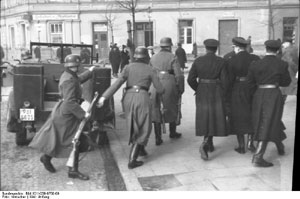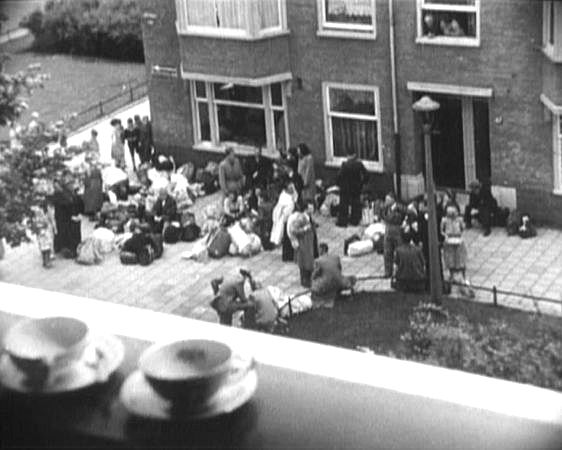

Razzia
Papa
“Is” called the collecting – up of Jews by the Germans a “Razzia” But
they did not want everyone. You would only know if they were searching
for you when it was too late. A “razzia” started when the Germans had
surrounded a specific building – by placing trucks at both ends of the
street. The trucks carried many soldiers armed with machine-guns. Some
soldiers would climb out of the trucks and set their machine-guns up on
the roofs of the houses. That way they were sure that nobody could
escape. Other soldiers would go into the houses and drive us out
into the street – before we could even put on our coats.
Sometimes we would have to stand for hours on the street, shivering. Non-Jews who could present their identity documents were allowed back into the buildings. We Jews had to remain standing until they had collected as many as they wanted, to be loaded onto cattle trucks and driven away. We always lived with the fear to be taken away like this too.

Razzia
On this photo a Razzia
in Crakau can be seen.
(B1)
| |
|
Herzogenstraße 8 |
 |
|
Jewish Inhabitants on the 20th of
June 1943 waiting for their deportation after a Razzia. |